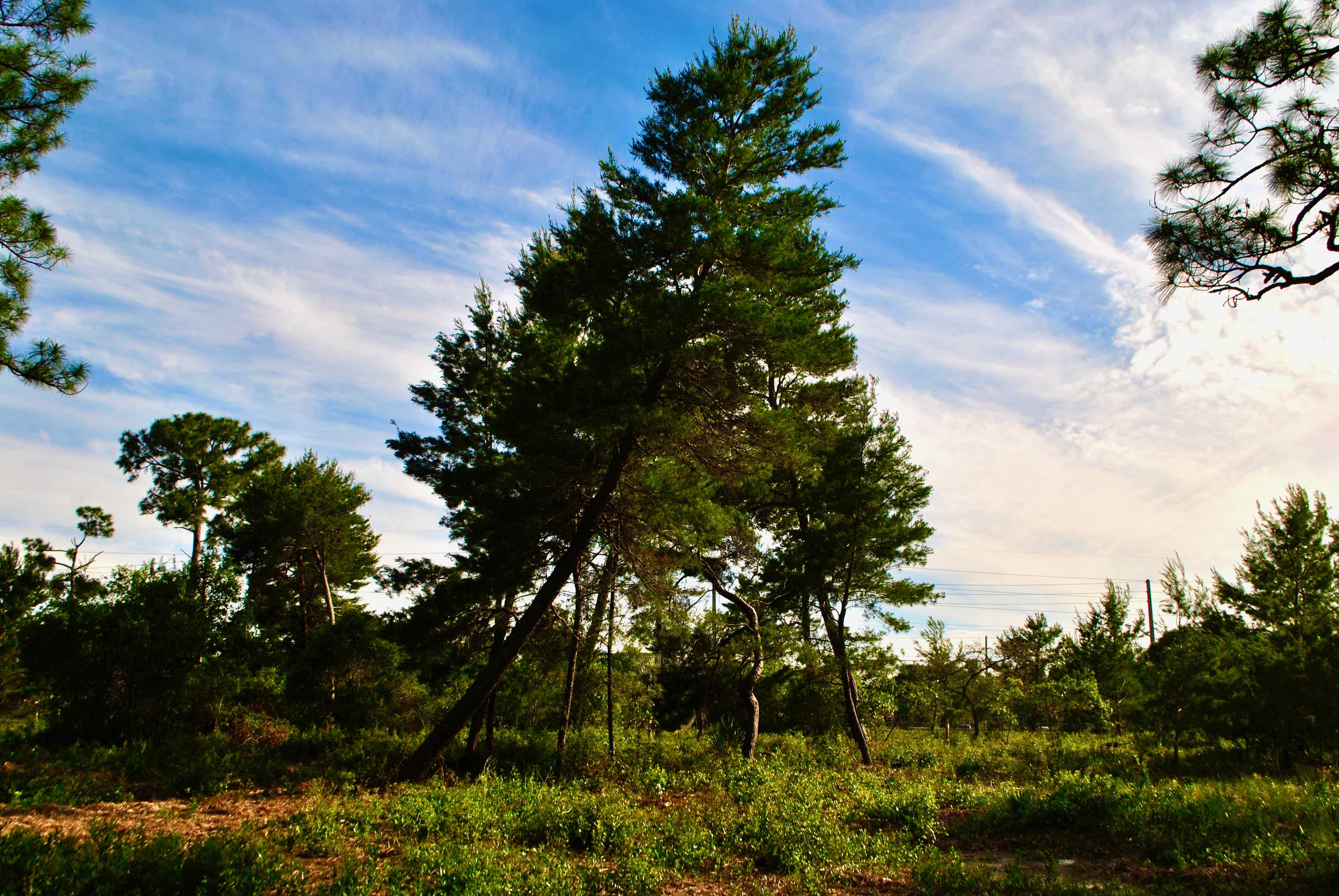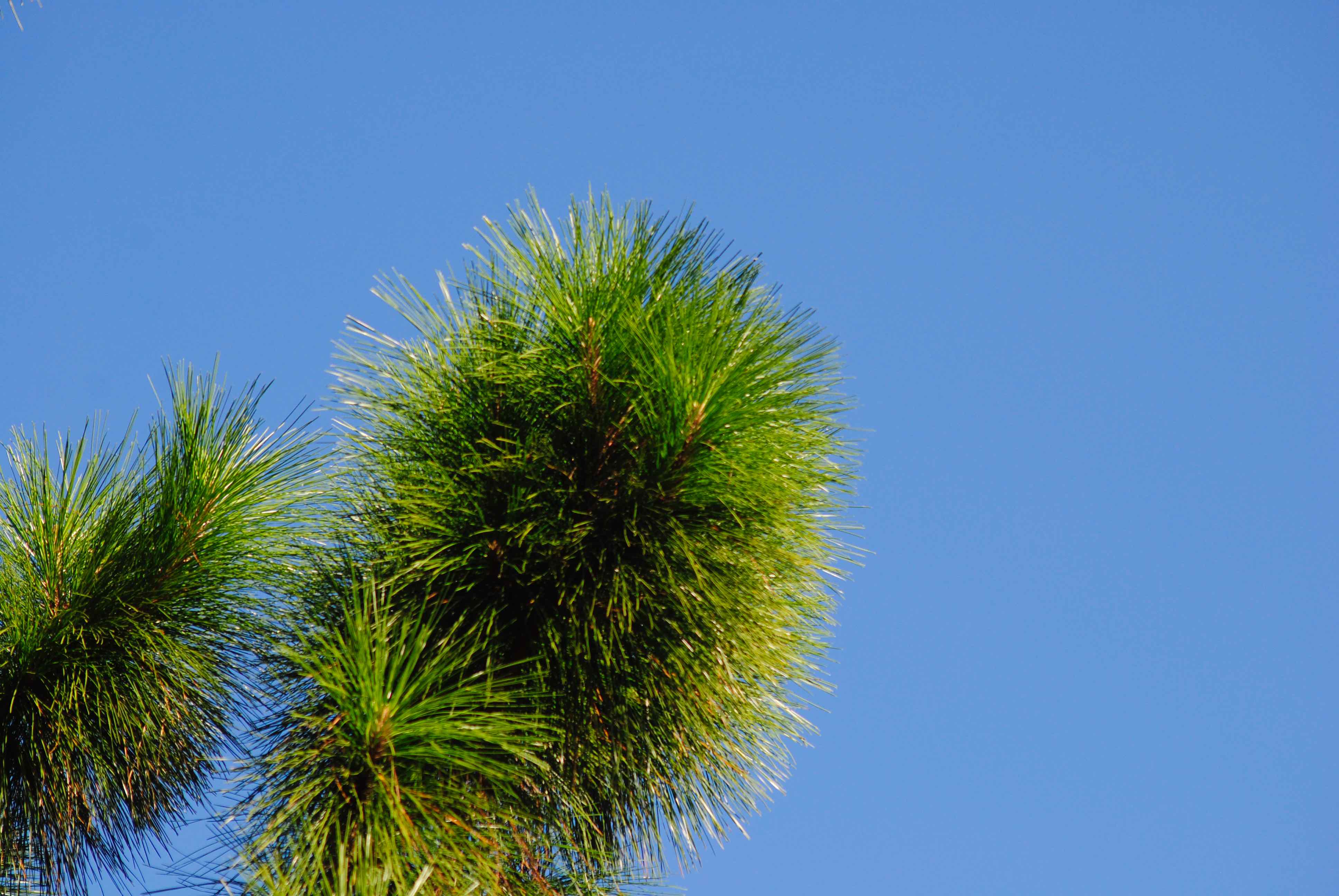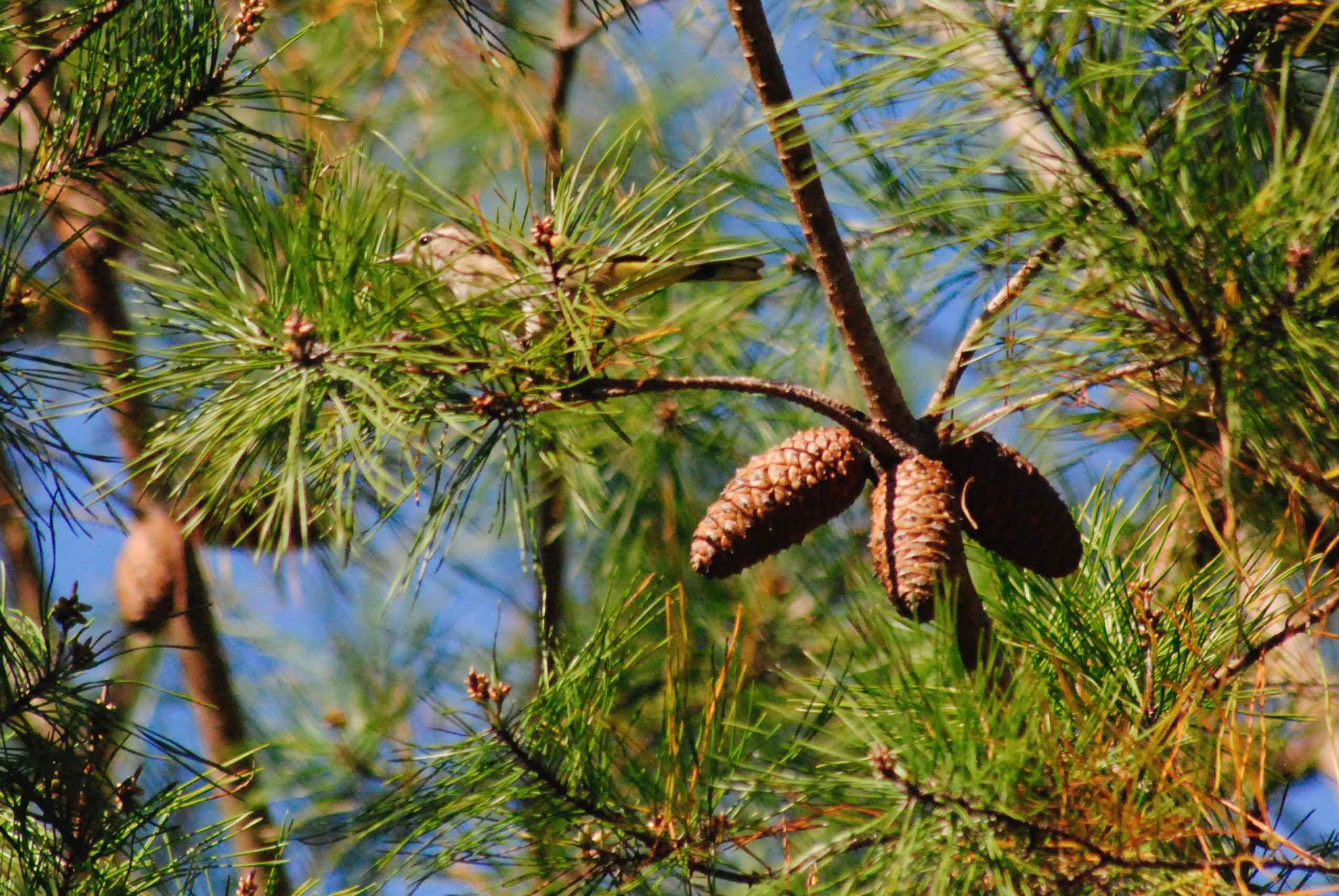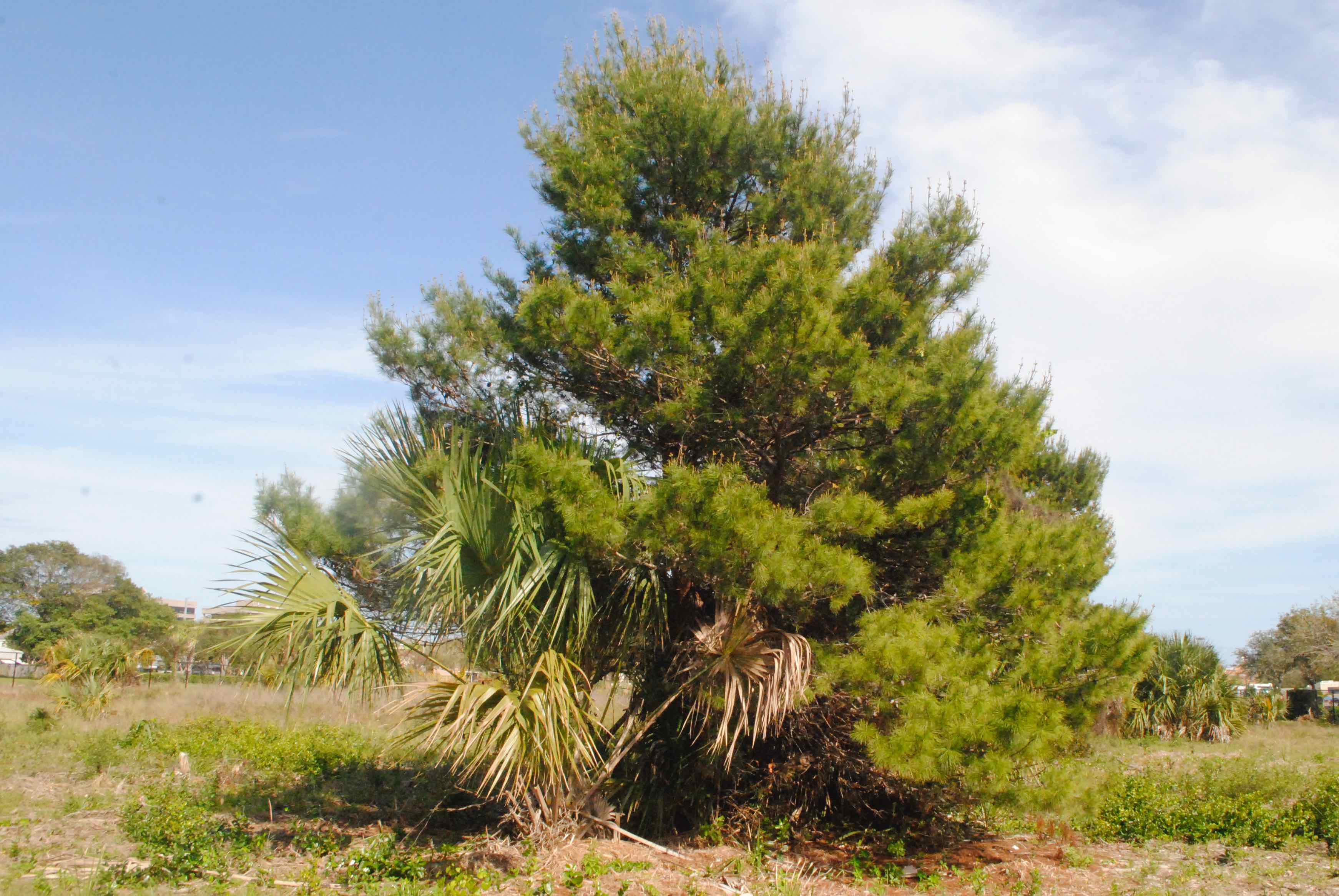
Sand pine, photographed at Delaware Scrub Natural Area, Jupiter, Palm Beach County, in March 2015.
The sand pine, Pinus clausa, got the short end of the stick on pretty much everything, compared to its Florida cousin, the slash pine. It's shorter, its needles are shorter and its life span is shorter. Nonetheless, it's an incredibly important part of the South Florida landscape — dead as well as alive.
Sand pines are Florida natives, found throughout the state, and throughout much of the coastal Southeast sans South Carolina and Louisiana. They are one of three pine species native to South Florida, the others being the slash and the rare longleaf. As the name implies, they're found in sandy habitats like scrubs, where they're often the dominant species.
Sand pines are usually 20 to 40 feet tall but can break 100; slash pines, on the other hand are typically 30 to 50 feet tall. Sand pine needles are two to three inches long, compared with the slash pine's seven to 12. The other major differences are with the bark, gray to dark brown and finer than the slash pine, and with the sand pine's much denser canopy. Sand pines are more likely to have branches along the length of the trunk, while the slash pine typically is branched only near the top, sort of like a lollipop.
There are two varieties of sand pine, the Ocala, found in Central and South Florida, and the Choctawhatchee, found farther north. The only difference between the two is with the timing of when their cones open.
It's worth noting that fire plays an extremely important role in the sand pine's life cycle. Sand pines, especially the Ocala, need fire to release seeds from their cones. But the frequency of fire has to be just right; the sand pine stand has to be old enough to produce cones but not so old that it can't.
The cones are a source of food for birds and mammals, but the trees themselves are a source of cover for many species. The endangered Florida scrub jay is known to nest in sand pines. According to the U.S. Department of Agriculture, 21 species of endangered or threatened plants and animals live in sand pine forests. Even dead, they continue to provide cover.
Sand pines are not important sources of timber because of their small size, but they are grown and harvested in northern Florida for pulp. The Choctawhatchee variety is also grown as Christmas trees in parts of Florida. Sand pines are members of Pinaceae, the pine family.
Click on photo for larger image
Links for Sand Pine



